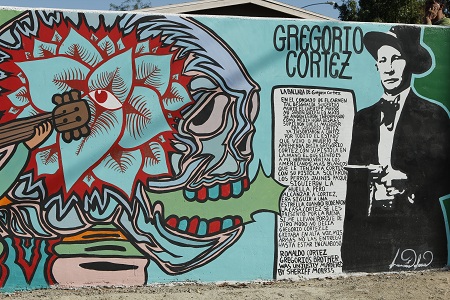 our collaborative work with The California Endowment’s Building Healthy Communities, ACTA facilitated another community cultural asset mapping effort in the Eastern Coachella Valley (ECV). A task force made up of several collaborators including, Raices del Valle, Culturas and Arts, Building Healthy Communities-Eastern Coachella Valley, and several residents of Duros and Coachella collected approximately 300 surveys and identified over 200 “cultural treasures,” or cultural people, places, events, and organizations that are valued by the community.
our collaborative work with The California Endowment’s Building Healthy Communities, ACTA facilitated another community cultural asset mapping effort in the Eastern Coachella Valley (ECV). A task force made up of several collaborators including, Raices del Valle, Culturas and Arts, Building Healthy Communities-Eastern Coachella Valley, and several residents of Duros and Coachella collected approximately 300 surveys and identified over 200 “cultural treasures,” or cultural people, places, events, and organizations that are valued by the community.
One of those cultural treasures was the Shady Lane Mural, a project of Culturas and Arts that brought together many visual artists of the Eastern Coachella Valley to document the history of Chican@s/Mexican@s. On November 17, 2012, at Dateland Park in Coachella, the Synergy Festival was held to unveil this thousand foot work of art, which is the second largest in California. Over 1,000 people roamed the park throughout the day enjoying music, culture, food and much more. Over thirty local bands performed from two different stages. Several local car clubs, some of which were also identified as cultural treasures, such as the low riding Cab Drifters, participated in the event.
In an effort to highlight the cultural treasures of the ECV the task force organized a “Cultural Treasures Village,” a space dedicated to celebrating and sharing the cultural assets identified by the community through the survey process. Four experts in material arts gave demonstrations including paper flower making by Maria Salazar, Purepecha embroidery of traditional clothing by Natividad Gonzalez, cross-stitch embroidery by Maria Pozas, and back-strap weaving of rebozos (traditional shawls) by Silvia Santiago. Also on hand were altar- like displays honoring the life work of three cultural treasures – Virginia Ortega, Evangelina Rios Gonzalez and Leo De los Santos – each of whom made important contributions to the community in promoting folkloric dances, regional Mexican music composition and Mexican charrería. Local residents of the Duros community (a trailer park where primarily indigenous people from Mexico live who are often times marginalized or forgotten) were invited to prepare and share Enchiladas Michoacanas and Pupusas Salvadoreñas. Over 200 people enjoyed these traditional recipes while learning about their place of origin and the people in the Eastern Coachella Valley who maintain these traditions.
Three Cultural Treasures shared inspiring testimonials from the stage telling stories of perseverance, resilience, and belonging. Jesse Gonzalez, the son of Evangelina Rios, spoke of the limited access his mother had to formal education, and her ability to excel as an artist by becoming a prolific music composer who wrote over 100 songs; some of which were made famous by the likes of Ramon Ayala, Banda el Recodo, and other important Mexican artists. Another cultural treasure, Virginia Ortega, expressed the importance of having a sense of community through arts and culture. Finally, the twelve-year old Pedrito Jimenez, who considered himself a cultural treasure because he still speaks his indigenous language and is one of the performers of the Purepecha traditional Danza de los Viejitos, gave a heart-warming rendition of the Mexican National anthem in his native language, Purepecha.
As the sun set, Virginia Ortega approached me and said, “This event is important for this community. I feel like we have finally arrived.”
